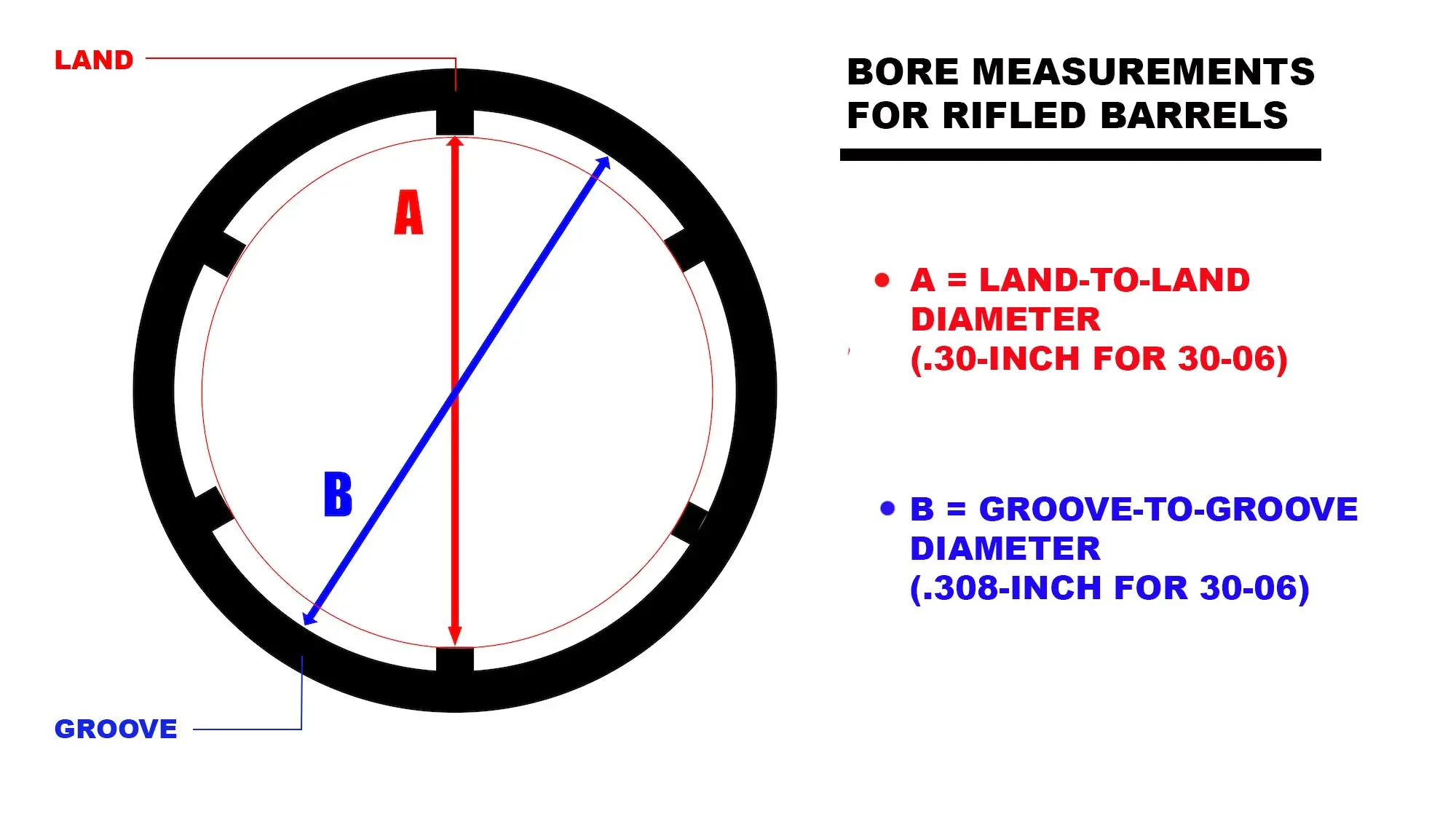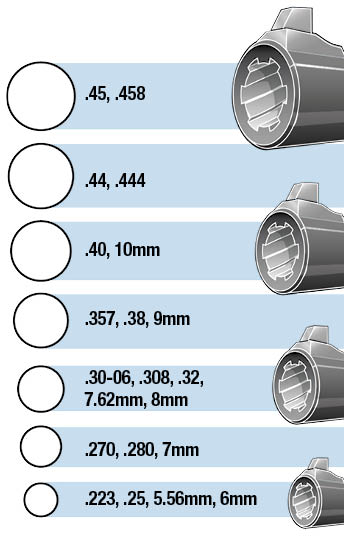Why Do Pistol and Rifle Calibers Measure Differently?
The measurement conventions for pistol and rifle calibers differ primarily due to historical practices and the design requirements of each type of firearm.
Pistol Caliber Measurement

In pistols, the caliber is typically defined by the diameter of the bullet, which is usually equal to the groove diameter of the barrel. For instance, a 9mm pistol has a bullet diameter of approximately 0.355 inches, which matches the groove diameter of the barrel. This practice ensures that the bullet fits snugly within the barrel, allowing for effective engagement with the rifling, which imparts spin and stability to the projectile during flight.
Rifle Caliber Measurement

In contrast, rifle calibers are often designated by their bore diameter, specifically measured between the lands (the raised portions of the rifling) rather than the grooves (the recessed parts). For example, a .308 Winchester rifle has a bore diameter of about 0.300 inches (land-to-land) and a groove diameter of about 0.308 inches. This distinction is important because it reflects the manufacturing process; bullets are generally sized to fit snugly against the grooves for optimal performance.
Reasons for Different Measurements
-
Design and Functionality: Pistols are designed for shorter ranges and typically use bullets that are larger than the bore diameter to ensure a tight fit and reliable performance. In rifles, however, using land measurements allows for more precise bullet sizing relative to the rifling.
-
Manufacturing Standards: Historically, American manufacturers have standardized jacketed bullets to match groove diameters, while lead bullets might be slightly larger. In rifles, using land measurements helps maintain accuracy and consistency across different manufacturers and designs.
-
Performance Considerations: The engagement between the bullet and rifling is crucial for accuracy. In rifles, measuring bore diameter allows for a more consistent fit that enhances stability during flight, while in pistols, matching bullet diameter to groove diameter ensures that bullets can expand slightly upon firing without excessive deformation.
Overall, these conventions reflect both practical considerations in firearm design and historical standards that have evolved over time.
References
- The Firing Line - Bullet Diameter vs. Bore Diameter
- Marlin Owners - Bullet Diameter vs. Bore Diameter
- Wikipedia - Caliber
- Cast Boolits - Bullet Diameter vs. Bore Diameter
- Reddit - Guns - Calibre Names and How They Relate to Actual Bore
- Brian Enos Forums - Optimum Bullet Diameter vs. Barrel Bore Diameter
- YouTube - Bullet Diameter vs. Bore Diameter
- Exclusive Multibriefs - Clearing Up the Confusion of Rifle Caliber
comments powered by Disqus